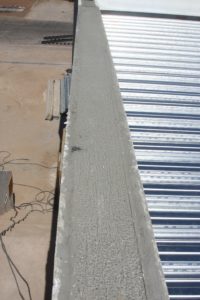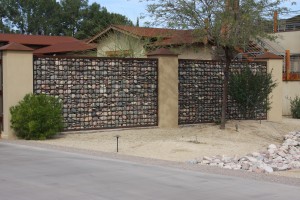STC Defined
STC or sound transmission class is a rating system used mostly in North America to measure or rather assign a number to the ability of a barrier or partition to inhibit sound energy from passing through it. Outside North America, they use a term called SRI or sound reduction index. STC is an average of measurement numbers that use 16 different frequency bands that begin at 125 Hz. and go through 4,000 Hz. The numbers are then assigned their respective positions on a sound pressure level curve that is derived using a complex algorithm. This algorithm produces one number which we call the STC rating of the structure or barrier. Unfortunately, the nature of the frequency range covered does not tell the whole story.
How It Works
If we have a noise source that we are trying to isolate from entering our room, and we measure the noise source to be at 80dB, then we have to decide what dB level we want in our room. If we want a noise level within our rooms of 50dB, then we need a barrier that can reduce our pressure levels by 30dB and we would seek a barrier with an STC rating of at least 30. However, this number is frequency dependent. Our barrier may attenuate 30 dB at 3,000 cycles but only 15 dB at 125 cycles. STC is an accurate number when the sound energy we are trying to isolate from is spread out evenly across the frequency spectrum and does not go below 125 Hz.
Whole Story
If we are concerned with the human vocal range which is from 1oo Hz. – 800 Hz., one can see that an STC measurement has value, since the STC measurement frequency bands fall within that range. If we are trying to isolate human vocals in an office setting then an STC value of a considered barrier, will have some validity. However, if we are dealing with frequencies that fall below 125 cycles, such as large trucks and explosions in our home theaters, then we need to be more careful and consider how our barrier will react to frequencies below 125 cycles.
Old School
The STC rating system was developed back in 1961 and has not been updated since that time period. During that time period we did not have the lower frequency energy issues we have today with home theaters and more people. Computer processing was almost non existent and if it was processing power was low. STC ratings that were assigned during that time period are still used today even though the products they are assigned to from then are no where close in composition to their original form. A good rule of thumb is to not trust ratings that were assigned before 2,000 because testing equipment was not that sophisticated and the margin of error could be as high as plus or minus 6dB. It is best to use STC in combination with other measurements.
Newer Rating Systems
The American Society For Testing Materials. The ASTM measurement system has three basic divisions: STC, CAC, and OITC . The CAC is the ceiling attenuation class which is for ceiling structures. The OITC is for outdoor / indoor transmission class that measures the sound transmission between outdoor and indoor structures. OITC uses a noise source spectrum that takes into considerations frequencies down to 80 cycles which is far more useful in today’s world. The IIC or Impact Isolation Class is a number that tells us how well a floor attenuates sounds from footsteps and dropped objects. Similar to STC, the IIC is formulated using frequencies from 100 Hz. – 3,150 Hz. The same lower frequency limitations apply as with the STC number especially if the stereo system on the floor above is full range.
Noise Criteria
NC or noise criteria number is a popular index. NC is a measure of just the noise itself and not the ability of a structure to inhibit it. It operates beginning at 63 cycles and moves up through 8,000 cycles. To arrive at the NC number, we look at one third bands for a given spectrum of noise. The noise spectrum is specified as having a NC rating that is the same as the lowest NC curve that is not exceeded by the noise spectrum.
STC – A Mixed Blessing
An STC number or rating has to be examined closely. If we choose 125 Hz. as our frequency for discussion and one barrier allows more energy to pass through than the other barrier, the former will achieve a higher STC rating. This occurs because remember from our prior discussion that 125 Hz. is the lowest frequency examined for an STC rating. Any amount of energy that passes below our lowest measured value will produce a higher STC rating and manufacturers have abused this simple issue.
Do Your Research
Most manufactures have data that indicates how their products perform below 125 Hz. It is just that an STC rating has been around for so long that there is no other standard present. One needs to look through the numbers to find the actual performance and isolation value. If a manufacturer does not have the supporting data below 125 cycles, one should look to ones that do.
New Standard Needed
STC or sound transmission class rating is a system for rating a structure’s ability to stop or hinder the transmission of sound through it. It is an old system established back in 1961 and is overdue for a change. A new system should be developed that will address frequencies below 125 cycles and will also be able to address spikes in sound pressure levels across the frequency range determined. One thing is for certain, whatever system is devised needs to go lower and include more current information.







